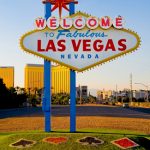You may have noticed that I am a man who is never short of words. I also rarely am for wont of things to do.
This is one of those times.
Every morning, I drag myself out of bed early, throw cold water on my face, and drag my sorry ass to my computers, where I compile lists of the positives and negatives facing the markets. Here is this morning?s list:
Negatives
*Almost all macro data has turned negative
*Economic growth is weak at 2.5%
*Q2 growth is decelerating
*Corporate earnings growth is weak
*Bonds are going up with stocks
Volume spikes on down days
Buying focused on defensives
Buying in a narrowing number of names
Top of 13 year channel
Commodities are crashing everywhere
Eve of seasonal weakness for 6 months
The sequester is slowly eating into our economy
The bottom line here is that even a first year intern would be out of his mind to buy stocks now.
Positives
The net net here is that you would be crazy not to pour every penny you had into stocks now. And therein lies the problem.
It would be easy to say that the two lists balance each other out. The reality is that the edge is in favor of the positives, and that the outlook for risk assets is still a friendly one, just. Some $170 billion a month is a lot of money, and buys truckloads of paper, like stocks and bonds. That means stock prices will probably go up before they go down.
This is the dilemma. Just as the markets was becoming exhausted of Ben Bernanke?s QE3, now eight months old, and stocks are hitting the top of a 13 year channel in the (SPY), we got an entire new round of quantitative easing from Japan. That was the outcome of ?Abenomics,? the last ditch, throw in the kitchen sink effort by the Japanese government to pull the country?s economy out of a death spiral.
The real shocker here is how much of the Japanese QE is diverting into foreign markets. Japanese institutions have been using the government buying to unload their domestic positions and buy the American equivalents. Japanese bond funds have begun soaking up US debt instruments (TLT), (JNK) on a large scale, and equity players have been piling into US high dividend stocks. They have also been flooding into high yielding instruments of any other description, including European sovereign debt, creating the mother of all rallies there.
So the choice here is very simple. Buy at the top of the biggest stock market rally in history, or do nothing at all. Sitting on top of a humongous 35.6% gain this year, and 46% off of the November bottom, I am inclined to do the latter.
I kind of like being up 35.6% on the year. I like posting a 26.6% gain less. I positively dislike being up only 16.6%, and I despise a mere 6.6% return, where most hedge funds now live. I think I?ll vote for sitting on my hands.
It is not like I?m really going to do nothing. But my standards for opening a new trade just got a lot tougher. I am going to wait for more extreme moves up before going short, bigger selloffs ahead of buying, and doing so with smaller sized positions when I do. I?ll be quicker on the draw when it comes to taking profits or stopping out. Better to wait for the market to come to me, than try and jump on a moving train.
To paraphrase an old expression from Navy flight school, it is better to be flat, wishing you had a position, than having a position and wishing you were flat.








